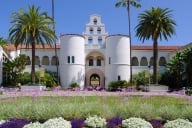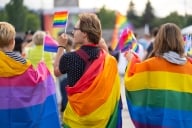You have /5 articles left.
Sign up for a free account or log in.
When Emily Johnston and some of her peers at Carleton College didn't see themselves reflected at the campus sexuality and gender center, they sought out an acronym revision.
Instead of LGBTQ and an "A" for "ally," they asked, can that letter recognize students who are asexual?
That was one year ago. Now, Johnston, a senior, is the president and co-founder of Asexuality Community and Education (ACE), which regularly draws 15 to 20 students to its meetings. And the campus center is actively working to expand its programs for asexual students.
An asexual describes someone who doesn’t feel sexual attraction, though, as Johnston points out, that's a rather basic definition that doesn't reveal all the variations of asexuality. As a result, many people use the term asexual spectrum.
“It means something different for everyone, and it means they experience relationships and intimacy differently,” Johnston said.
In the past couple years, student support groups for asexual students have grown more common on campuses around the country, including at the University of Colorado at Boulder and New College of Florida. In other cases, already existing groups, such as the Lambda Alliance at the University of Georgia, have added asexual to the list of gender identities and sexual orientations they represent.
Laura Haave, director of the gender and sexuality center at Carleton, said the center has made an effort to sponsor programs that are more inclusive of asexual topics or speakers, she said. The center also has redone some of its programs about communication and consent, to acknowledge that talking about sex for some people means identifying as asexual.
“There’s a pretty strong belief in our society that if you don’t experience sexual desire or sexual attraction, there’s something wrong with you,” Haave said.
In that sense, Haave sees several parallels between asexual people and gay, lesbian and transgender populations, who faced similar discriminatory pressure to change who they are or "get better."
The gender and sexuality center earlier this year added the word “asexual” into its mission statement and an “A” onto the LGBTQ acronym.
For Johnston, that’s a way to recognize that asexuals exist and are a valued and visible part of the queer community, she said. It’s an act of validation.
Warren Scherer, co-chair of the Consortium of Higher Education LGBT Resource Professionals, said the preferred acronym for gender and sexuality identities varies around the country.
Some groups have converted the “A” already on the end of the acronym from “ally” to “asexual.” Some have chosen not to tack the “A” on because of a debate about whether it could signify a lesser importance than the other letters because it’s at the end.
Others, Scherer said, acknowledge that there are so many more identities outside the four that are included in the acronym LGBT, that they’ve adopted the term “LGBT plus” to include all the others.
In a culture that hypersexualizes young adults -- where sex, attraction and desire are celebrated and encouraged -- asexuals can often feel stigmatized and avoid identifying themselves, Scherer said.
When youth Scherer has worked with share their asexuality with both straight and gay friends, they’re often met with responses such as, “You’re just confused,” “You haven’t met the right person yet,” and even, “What’s wrong with you?”
New England Aces has hosted community events on college campuses in Boston to promote dialogue and understanding of asexuality, especially during Asexuals Awareness Week, which was at the end of last month. The group also offers recommendations to college gender and sexuality centers on ways they can be more inclusive of people on the asexual spectrum.
The most important thing is that age-old idea about not making assumptions, said Hannah Hussey, a co-organizer for New England Aces.
“Don’t assume that someone who you’re talking to thinks of sex or enjoys sex in the same way you do,” she said.
She also recommends to groups focused on sexual orientation and gender issues that they host a diversity of events and are more clear in event descriptions about what a topic is about and who the target demographic is, so that, for example, an asexual person who’s not interested in sex doesn’t show up at an event about hooking up.
Hussey said she’s been out of college for a few years now, and even in that time, there’s been a big difference in how colleges approach asexuality and the way that faculty and staff have learned to talk about it.
In Johnston’s eyes, though, there’s still a lot of progress to make. The visibility of people who identify as asexual has grown, but it’s still extremely low, she said.
“It happens so often that people don’t even know that asexuality is an orientation,” Johnston said. “Or they’ve heard of the word, but don’t know what it means.”








